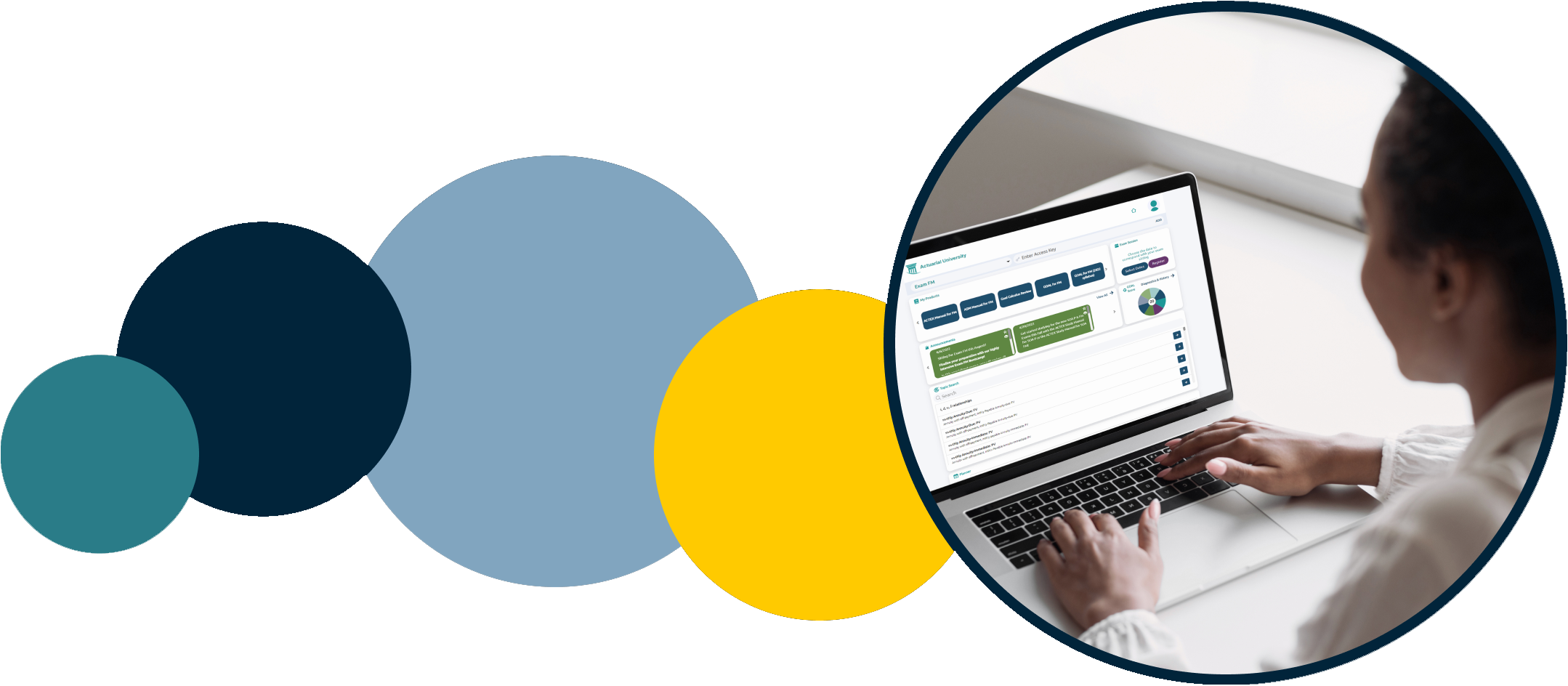CS1 Manual Authors – Getting To Know Them. (Part 2 – Yiping Guo)
Nardine Andrawos: Hello everyone, this is Nardine Andrawos, ACTEX’s Actuarial Strategic Analyst. Last week, I was joined by Gabe Necoechea. This week, I’m excited to share Yiping Guo’s side of the story. Yiping is also a Co-Author of the ACTEX Manual for IFoA CS1, and he’ll be sharing a bit about his background and his unique perspective on actuarial education.
Hello, Yiping. Thank you for joining us today. Could you tell us a bit about yourself, your background, education, work experience, and hobbies?
Yiping Guo: Since childhood, I’ve always been passionate about mathematics — not just solving problems but discovering elegant, clever solutions and explaining them in simple terms. I’ve enjoyed applying mathematical thinking to model real-world phenomena, from simple games like poker to complex financial systems such as stock prices. This curiosity eventually led me to actuarial science, where mathematics and real-world decision-making meet.
I hold a Bachelor’s degree in Finance and a Master’s in Mathematics and Statistics, and I earned my PhD in Actuarial Science from the University of Waterloo, where I conducted academic research and taught courses on a variety of actuarial topics, including probability, risk modeling, and statistical methods. I’m also an Associate of the Society of Actuaries (ASA). Currently, I work as a Senior Quantitative Analyst at the Canadian Imperial Bank of Commerce (CIBC), focusing on market risk modeling and applying AI and machine learning to capital markets.
Outside of work, I’m an avid Mahjong player. Beyond the game itself, I’m fascinated by the mathematics behind Mahjong (especially its nature as a multi-player imperfect-information game) and I enjoy exploring its underlying theory and AI development.
NA: What inspired you to write this manual specifically?
YG: As an ASA who completed all the required exams without any exemptions, I truly understand how challenging it can be to progress through the large number of actuarial exams needed to earn the credential. One of the biggest hurdles for candidates is that official materials, while comprehensive in terms of syllabus coverage, are often not the most efficient or accessible for effective learning. For example, the CS1 core reading covers the required topics but often lacks detailed explanations and sufficient exercises, making it difficult for students to build a deep understanding. While the IFoA recommends additional textbooks, their sheer volume and breadth can overwhelm candidates and are often impractical for focused exam preparation. This experience inspired me to write the CS1 Study Manual, a resource designed to bridge these gaps by helping students grasp the foundational concepts clearly, practice exam-style questions, and achieve both solid understanding and time-efficient preparation for success in the exam.
NA: What three key tips in the manual do you think every aspiring actuary should know, and why?
YG: Focus on the foundation: The CS1 exam is mostly theoretical, and some questions can become quite complex. There’s no shortcut — memorizing a handful of formulas and patterns won’t be enough to achieve a strong passing score. That’s why, in this manual, we made a deliberate effort to explain where key formulas come from, how different concepts connect, and useful techniques to help students remember them efficiently and intuitively.
Enjoy the learning: Mathematics can feel daunting at times, especially when preparing for a comprehensive exam like CS1 on a tight schedule. To help ease this, we worked to make the math as intuitive and engaging as possible, using plain language, relatable stories, clear illustrations, and real-world examples. Some of these examples go beyond actuarial practice, offering interesting contexts to keep students motivated and make the learning process more enjoyable.
Start from simple: CS1 exam questions often combine multiple topics and can be presented in complex ways. When learning any new material, it’s essential to start with the basics — understand the simplest special cases and their real-world applications first. This approach builds a solid foundation and creates a smoother transition to tackling more difficult and intricate problems.
NA: What was the most challenging part of writing this manual?
YG: The most challenging part of writing this manual was finding the right balance between mathematical explanation and exam preparation. While we worked hard to make the math accessible and engaging to help flatten the steep learning curve, this manual is not meant to be a full mathematics textbook — it’s a study resource designed specifically for exam success. At the same time, focusing too much on exam techniques at the expense of foundational understanding would leave students struggling with the more challenging questions they are likely to encounter.
NA: Are you interested in writing more manuals in the future?
YG: Of course! I will be more than happy to contribute to more manuals in the future and benefit students for more exams.
NA: Do you have any general study or exam tips you’d like to share?
YG: 1. Set the right study window: Choose a study period that matches your experience and learning pace. Don’t try to cover everything in just a week — that’s simply not realistic — but also avoid stretching the timeline too long, as it can lead to forgetting earlier material and losing momentum. The best approach is to select a manageable timeframe and maintain steady progress with multiple smaller milestones along the way. 2. Prioritize your understanding: You don’t need to master every detail to pass the exam. If you come across a particular concept (not an entire chapter, of course) that feels especially challenging or time-consuming, it’s okay to move on and focus your energy on other, more critical topics. Efficient learning is just as important as thorough understanding.
NA: Thank you so much, Yiping, for taking the time to share your insights with us today and for being such an essential part of the CS1 manual! We look forward to many more manuals from you.



 IFoA Core Readings
IFoA Core Readings